Formula E season 10 starts Saturday

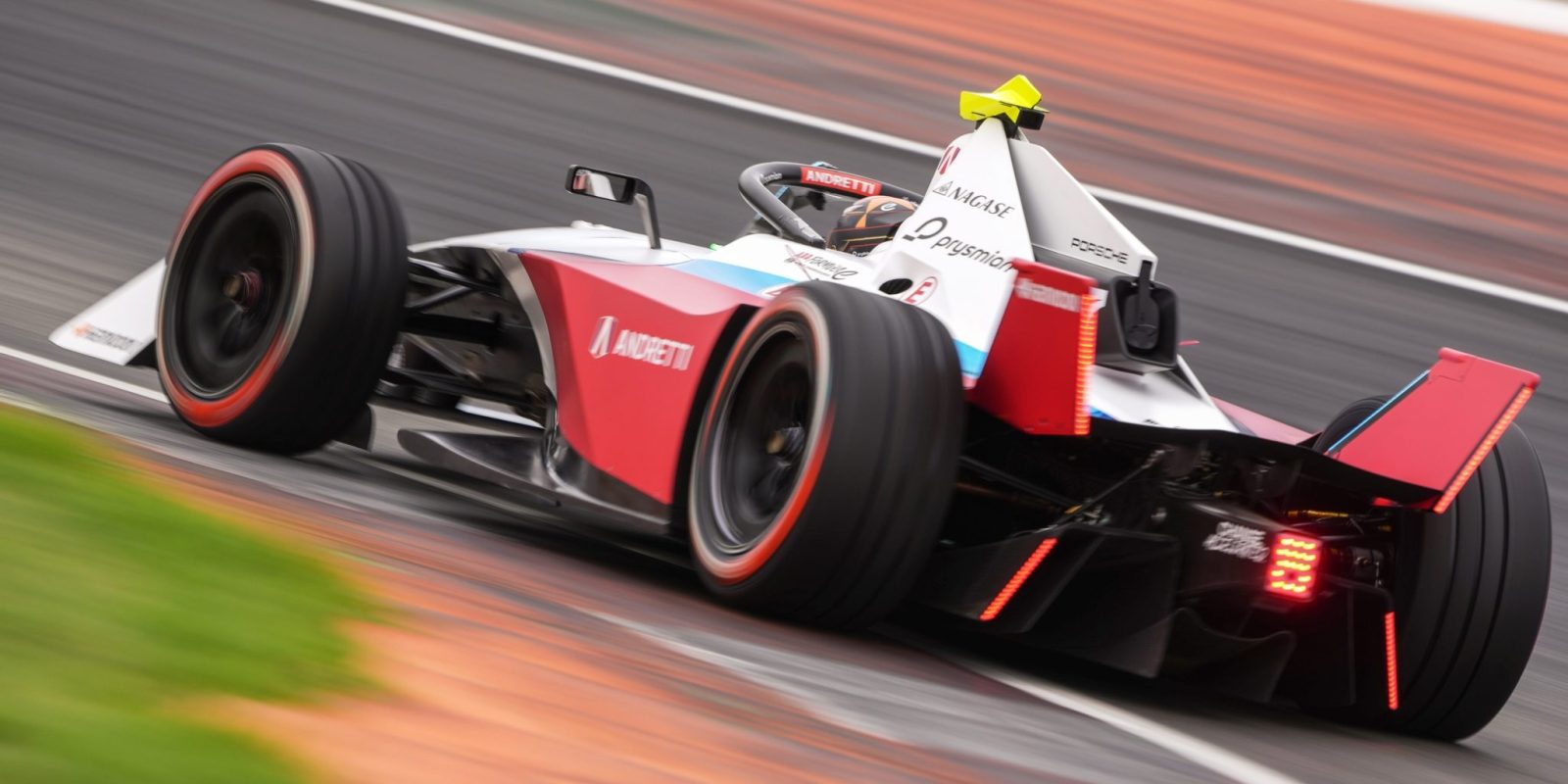
Formula E returns to track this Saturday for its tenth season with a race in Mexico City, in a season that brings three new tracks and the debut of Formula E’s new ultra-fast mid-race charging system.
Formula E is the FIA’s top-level electric open-wheel racing series, racing single-seater racecars mostly on downtown street tracks in the world’s great cities. The series has so far raced in 24 countries and 30 cities across its first nine seasons, with 3 more new tracks and 1 new country added to the calendar for the tenth season.
At nearly 2,300m/7,500ft altitude, Mexico City’s track provides an excellent demonstration of the strengths of electric drive. Combustion vehicles that race there have to contend with thinner air, which means less efficient combustion and lower engine power. With electric drive, this isn’t a worry – electric motors work equally well at any elevation.
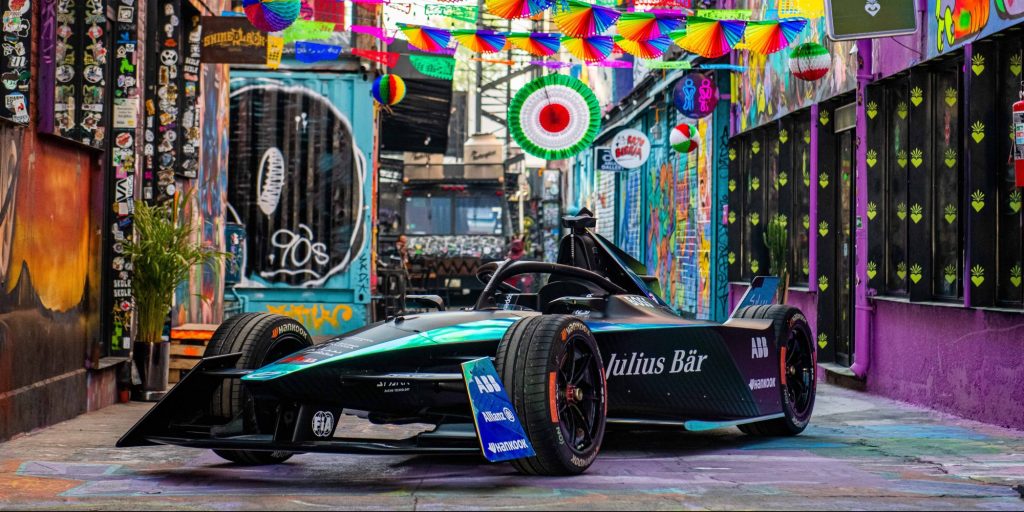
For season ten, Formula E’s faster, lighter, and much more angular Gen3 car returns, which debuted last season. It promised faster laptimes, but we saw only mildly improved laptimes compared to the previous year’s Gen2 equipment as teams got used to the new cars throughout the year.
But in this season’s winter testing in Valencia, the Gen3 cars proved to be more than a second faster than last year, suggesting that the teams might be getting the hang of their equipment (although part of this may have been due to testing occurring a month and a half earlier, in October, when the track was slightly warmer).
New tracks – Tokyo, Shanghai and Misano
Formula E will race on three new tracks and in one new country this year.
The biggest news is Formula E’s arrival in Tokyo, the world’s largest megacity and the series’ first race in Japan. The Tokyo race occurs around the “Tokyo Big Sight” international exhibition center, right alongside Tokyo Bay.
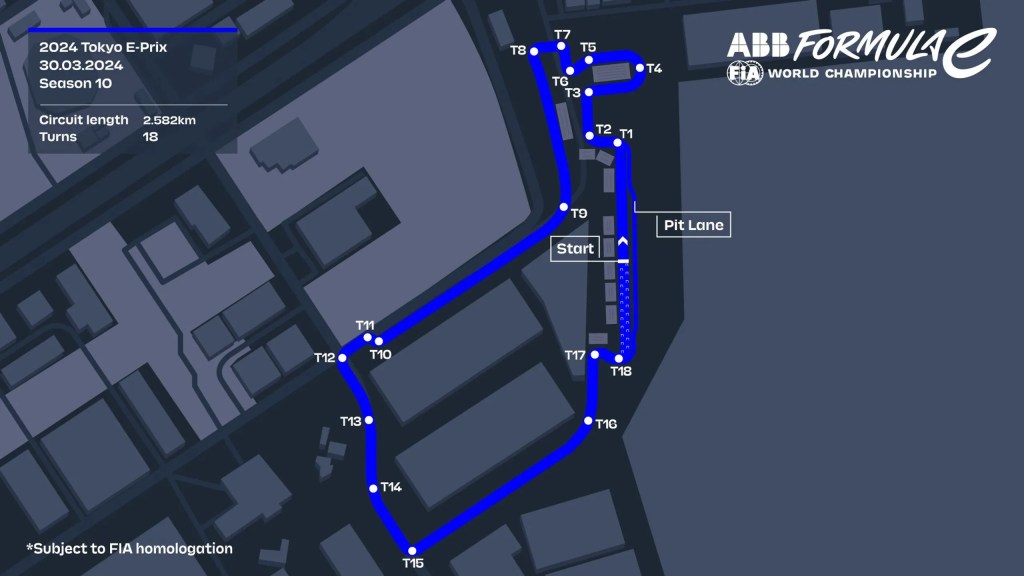
While Formula E has held many races in nearby Asian countries, it hasn’t been to race-obsessed Japan. Japan has its own racing leagues and Formula 1 is quite popular in the country, and the country has a particularly strong automotive industry. But that automotive industry has so far been hesitant to adopt electrification, so it will be good to see the reception for Formula E there.
Another new track will be in Shanghai, China. Formula E has raced in China multiple times before, at tracks in the capital Beijing (which held Formula E’s first race ever) and southern resort city Sanya. It has also raced in Hong Kong.
| Location | Date | Location | Date |
| Mexico City, Mexico | Jan 13 | Berlin, Germany | May 11 |
| Diriyah, Saudi Arabia | Jan 26 | Berlin, Germany | May 12 |
| Diriyah, Saudi Arabia | Jan 27 | Shanghai, China | May 25 |
| São Paulo, Brazil | Mar 16 | Shanghai, China | May 26 |
| Tokyo, Japan | Mar 30 | Portland, USA | Jun 29 |
| Misano, Italy | April 13 | Portland, USA | Jun 30 |
| Misano, Italy | April 14 | London, UK | Jul 20 |
| Monaco | April 27 | London, UK | Jul 21 |
The Shanghai race will be held at Shanghai International Circuit, a true race track rather than a street track. This track has been used for Formula One races in the past and is scheduled to host another F1 race again this year, and is a high speed circuit with several long straights. High speed circuits have offered an interesting challenge for Formula E in the past, as higher speeds mean lower efficiency and increase the benefit gained from drafting, especially in a low-downforce and energy-constrained series like this one.
Last year at Portland (another purpose-built race track, which the series returns to this year), the race ended up taking on similar strategy to a bicycle race, with cars saving energy in a peloton-like pack until later in the race where the true sprint began. We might expect to see something similar from Shanghai – though it’s also likely that Formula E will use a shorter layout instead of the full high-speed F1 layout, as it has done on other tracks before.
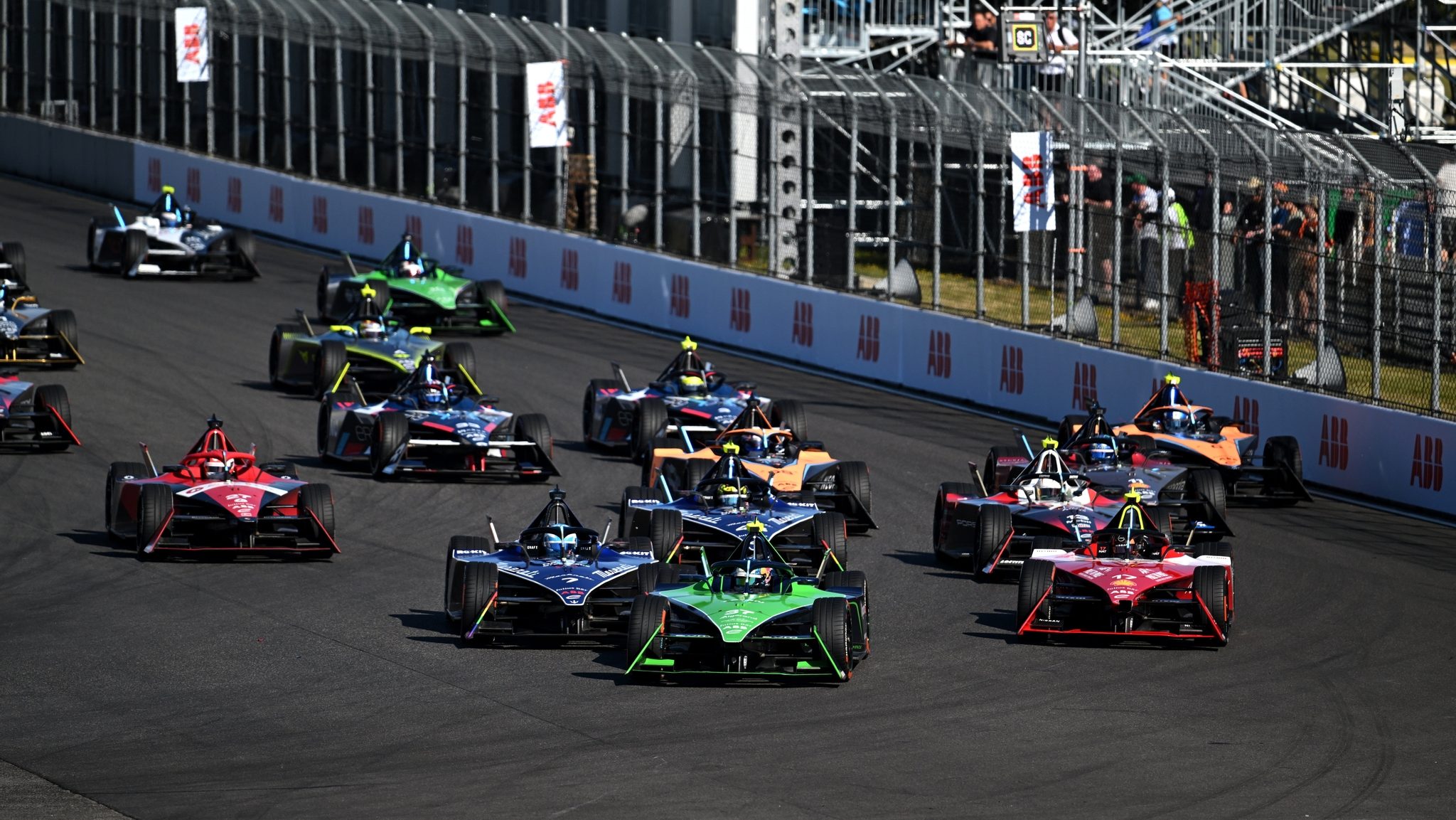
Finally, the last new track is in Italy, where the series has raced many times before on the downtown street circuit at the Rome ePrix, but the race is moving this year to another actual race circuit at Misano Adriatico, on the Adriatic coast of Italy. This track is often used as a motorcycle track, much like Formula E’s winter testing track in Valencia, with lower speeds and a shorter lap length than the full Shanghai circuit (but longer than the Portland circuit).
Mid-race charging is finally here
We’ve come a long way since the first Formula E season, when originally drivers would stop in the middle of the race to swap from one car to another with a fully-charged battery. Formula E had gone with this system because it would be too difficult to set up mid-race charging or battery swapping, so they just swapped the driver from one car to the other instead.
The Gen2 car solved this problem, as battery density had improved enough that battery (or car) swapping was no longer necessary. Since then, Formula E cars haven’t needed pit stops, and finish the race on the same battery and tire they started on.
But with EVs maturing and DC quick charging being in focus, Formula E is trying to incorporate that concept into racing now.
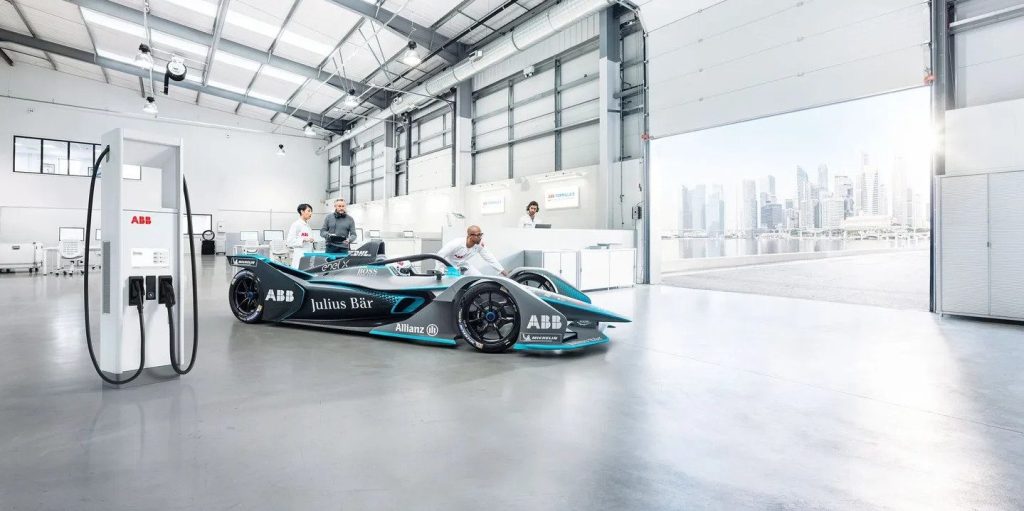
Formula E had originally planned to introduce a mid-race charging stop alongside the Gen3 car last year, but had to push back the plans for a year due to problems getting the equipment built.
Now, the system is ready to be used at select races this year, and it will debut at the aforementioned Misano Adriatico ePrix in Italy in April. For the races where it’s active, it will replace Formula E’s “Attack Mode” system, which gives every driver a period of boosted power use that they can use strategically to gain positions during the race.
The new mid-race charge system will be called “Attack Charge,” and will charge cars at up to 600kW, quite a bit faster than the fastest consumer-available fast chargers today that top out at 250-350kW.
Formula E says that a mandatory 30-second charging stop in the middle of the race will deliver about 4kWh of energy to the cars – this is only about ~10% worth of charge, but that’s not bad for 30 seconds of charging. This extra energy will be usable during periods later in the race where cars can boost power output to 350kW, rather than the standard 300kW.
The addition of a mid-race charging stop promises to shake up race results more, as teams will have some strategic flexibility about when to take their pit stops. This means more passing, which has always been a strong point of Formula E.
What to expect
Formula E has offered exciting racing all along, with significantly more lead changes and unpredictable racing than Formula One. Some of Formula E’s more chaotic races, like Portland last year, have had almost as many position changes during a single race as Formula One will see over an entire season.
Last season, 7 drivers from 6 teams won a Formula E race, whereas in F1 a single driver won 12 races on his own. The championship – which went to Jake Dennis, whose team Jaguar got second in the Teams’ championship behind Envision – wasn’t decided until the final race weekend, whereas the F1 championship was decided months before the season ended.
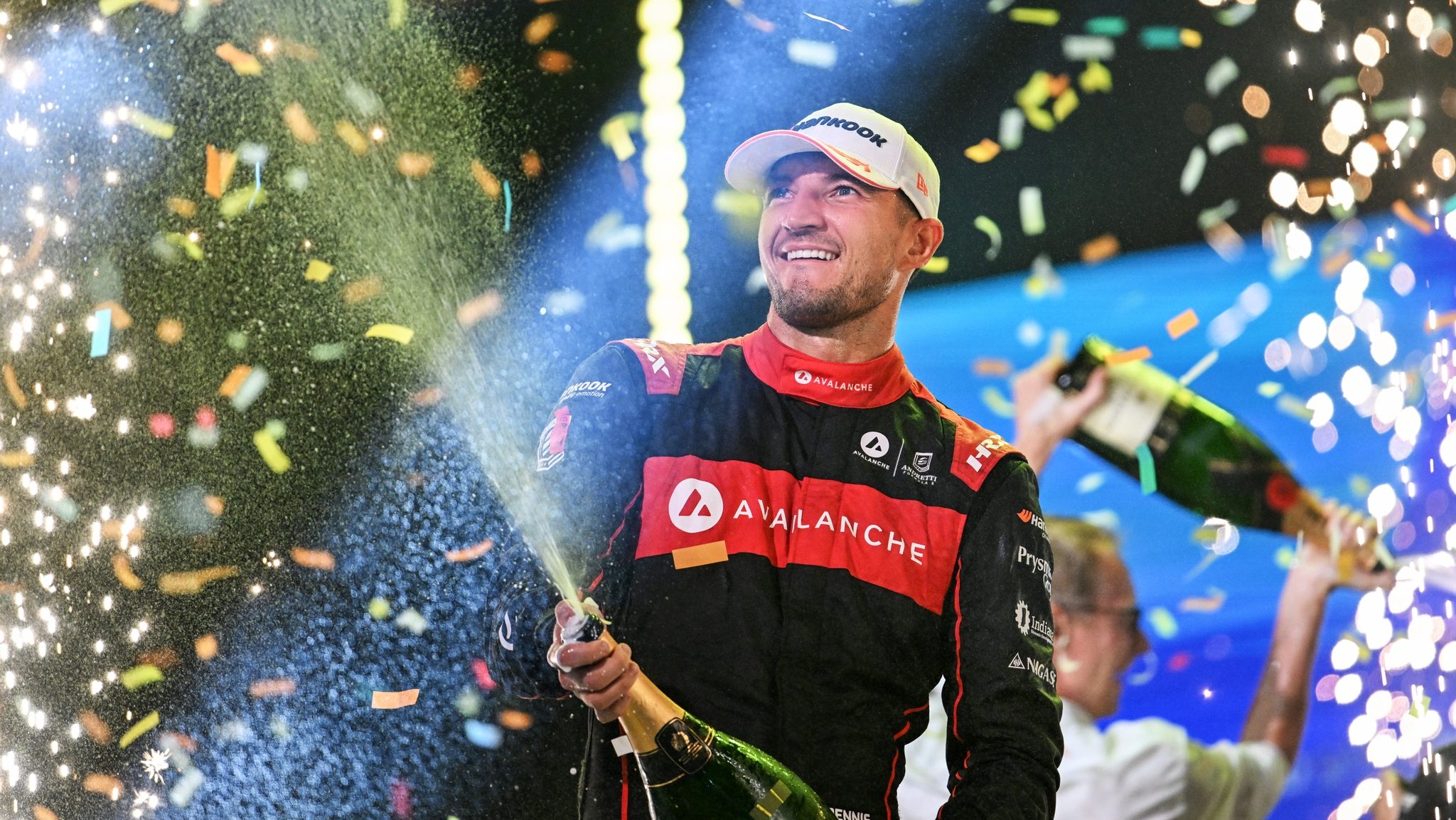
So if you’re interested in seeing unpredictable racing, Formula E is likely to provide that.
As with most years there have been a number of driver and team changes, with Nio leaving the sport and the team rebranding to ERT after new sponsorship. Several teams have swapped drivers or brought back former Formula E drivers, but the one new rookie is Jehan Daruvala, who joins Maserati. He comes from Formula 2 where his best season result was 7th, though he has ranked as high as 2nd in other series.
As much as the racing is unpredictable, over the course of a season the cream does tend to rise to the top. Some teams have classically done better across seasons, so we can expect the likes of Jaguar, Envision, Andretti, DS Penske and Porsche to show up near the top of the table. In winter testing, it looked as if the Jaguar powertrain, used by the Jaguar and Envision teams, performed best, so that bodes well for those two teams and their drivers Mitch Evans, Nick Cassidy, Robin Frijns and Sebastien Buemi.
The first race of Formula E’s tenth season is this Saturday at 8 PM UTC, Noon/12 PM PST, 3 PM EST, or 2 PM local Mexico City time. In the US, all sessions will be streamed live on Roku, or will be broadcast delayed on Sunday at 4:30PM on CBS. To find out how to watch it in other regions, check out Formula E’s “Ways to Watch” page.
FTC: We use income earning auto affiliate links. More.